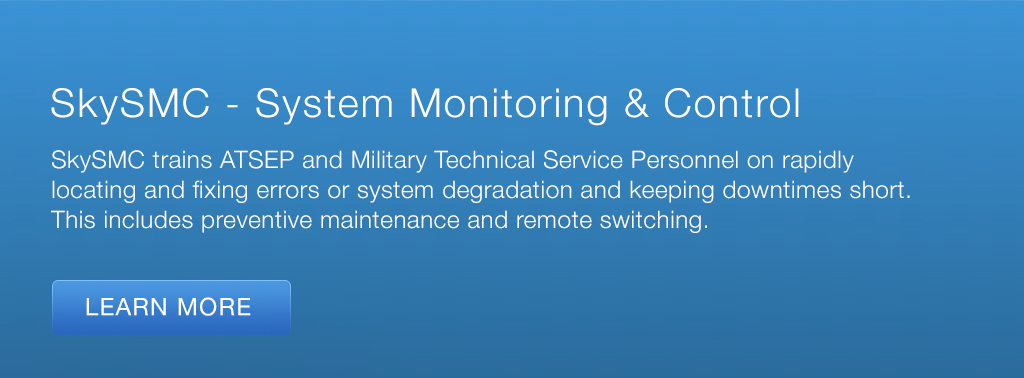The introduction of virtual towers, as defined in EUROCAE Standard ED-240A, and the remote working of Air Traffic Controllers and Air Traffic Safety Electronics Personnel (ATSEPs) will bring a plethora of advantages for ATC. It also requires modern Remote Monitoring and Control Systems and a Specific Skill Set for ATSEP.
The Positive Effects
Here are some potential effects:
-
Improved Coverage in Remote Areas: Virtual towers allow for better control of remote areas where establishing physical air traffic control facilities may be challenging or costly. This can lead to enhanced surveillance and monitoring capabilities in these regions.
-
Dynamic Staffing: The ability to staff virtual towers based on temporary requirements enables more flexible allocation of resources. During periods of low traffic or specific operational needs, remote towers can be staffed accordingly, optimizing efficiency and reducing costs.
-
Enhanced Efficiency: Remote monitoring and control processes can benefit from increased automation and advanced technology. Virtual towers often incorporate advanced surveillance systems, such as multiple cameras, sensors, and data analysis tools, which can improve situational awareness and decision-making.
-
Reduced Workforce Footprint: The implementation of virtual towers and remote ATSEPs may reduce the need for physical presence at every air traffic control location. This can lead to a smaller workforce footprint and potential cost savings associated with infrastructure and operational expenses.
-
Enhanced Safety Measures: Virtual towers and remote monitoring systems often integrate additional safety features, such as redundant communication links and backup systems. These measures can improve overall system reliability and resilience in case of failures or emergencies.
Special Considerations for ATSEP
In addition to the impacts mentioned above, there are specific considerations related to ATSEP requirements and the software used for remote monitoring and control:
-
Enhanced ATSEP Requirements: The shift towards remote working necessitates additional requirements for ATSEP. They must possess the necessary technical skills, adaptability, and proficiency in remote monitoring and control technologies. Training programs need to be implemented (exceeding what is required in EASA's Easy Access Rules based on EU 2017/313), to equip ATSEPs with the knowledge and expertise needed to effectively operate in a purely remote environment.
-
Advanced Monitoring and Control Features: Remote working by ATSEP increases the demand for robust monitoring and control features in the software used for remote operations. The software needs to provide comprehensive real-time data, including surveillance feeds, sensor information, and system statuses. These features ensure ATSEPs have a complete overview of the remote infrastructure.
- Remote Control: As ATSEPs work remotely, the software should include remote maintenance capabilities (switching, parametrization, troubleshooting, software updates, or preventive system maintenance etc.) and technical support features. This allows for efficient action without requiring physical presence on-site, reducing downtime and maximizing operational efficiency.
-
Data Security and Cybersecurity Measures: With ATSEPs working remotely, there is an increased need for stringent data security and cybersecurity measures in the remote monitoring and control software. Encryption protocols, access controls, and intrusion detection systems and processes should be implemented to safeguard sensitive information and protect against potential cyber threats.
-
System Redundancy and Resilience: Given the critical nature of air traffic control operations, the ATC infrastructure should incorporate redundant systems and backup mechanisms. These redundancies help ensure continuous functionality, even in the event of system failures or disruptions, minimizing any impact on air traffic operations. In cases of failures or system degradations, ATSEP can switch over from one subsystem to the backing system.
SkyRadar's System Monitoring & Control Solution
SkyRadar offers System Monitoring and Control (SMC) Training Solutions for ATSEP, including specific packages for Remote Towers. These solutions have been developed for civil and military training academies and can be deployed in the context of instructor-led qualification courses. The can also be used for remote SMC training in the context of the academy's training classes.
The solutions can be used for ATSEP-SMC training compliant to EASA's Easy Access Rules for ATM-ANS (Regulation (EU) 2017/373) and ICAO Doc 10057.
The heart of the training solution, SkySMC is not a simulator, but a fully operational open monitoring system. It comes by default with a server including various virtualized applications and virtualized servers, but also connects to simulated systems. In addition, there are various hardware extensions available including training infrastructures, monitorable training radars, or even complete ATM systems, all connected to the System Monitoring & Control solution.
Conclusion
The introduction of virtual towers enhances surveillance capabilities in remote regions. Furthermore, the ability to dynamically staff virtual towers based on temporary requirements offers flexibility in resource allocation, optimizing efficiency and reducing costs.
However, the shift towards remote working for ATSEPs necessitates enhanced technical skills, adaptability, and proficiency in remote monitoring and control technologies. Training programs are required to equip ATSEPs with the necessary knowledge and expertise to operate effectively in a remote environment.
SkyRadar has the required solutions, needed by Aviation Academies and Training Centers.
Let's talk
Stay tuned to be always the first to learn about new use cases and training solutions in radar qualification (real radars or simulators) for ATSEP.
Or simply talk to us to discuss your training solution.




